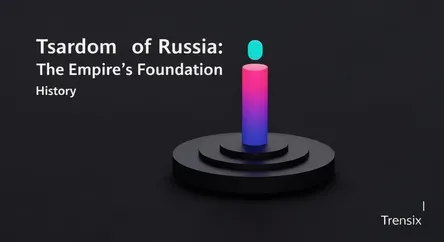History
Tsardom of Russia: The Empire's Foundation

An overview of the Tsardom of Russia (1547-1721), the era of Ivan the Terrible and Peter the Great that saw vast expansion and autocratic rule.
What is it?
The Tsardom of Russia was a centralized Russian state that existed from 1547 to 1721. It began when Ivan IV, famously known as Ivan the Terrible, was officially crowned "Tsar of All Rus'," elevating the Grand Principality of Moscow to a new level. This period was defined by absolute monarchy, where the Tsar held unlimited power. The Tsardom saw immense territorial growth, expanding by an average of 35,000 square kilometers per year from 1550 to 1700 through the conquest of Siberia and wars with neighboring powers like the Polish-Lithuanian Commonwealth and Sweden. The era included the turbulent "Time of Troubles" after the end of the Rurik dynasty, followed by the rise of the Romanov dynasty in 1613. The Tsardom officially ended in 1721 when Peter the Great proclaimed the Russian Empire after his victory in the Great Northern War.
Why is it trending?
The Tsardom of Russia remains a topic of historical interest because it laid the political and ideological foundations of modern Russia. The concept of Moscow as the "Third Rome," a successor to the Byzantine Empire and the center of Orthodox Christianity, emerged during this period and continues to influence Russian national identity. Furthermore, the tradition of a strong, centralized, and autocratic state, consolidated by rulers like Ivan the Terrible and Peter the Great, is often seen as a historical precedent for later forms of governance in Russia. This legacy of powerful central rule provides context for understanding Russia's political trajectory and its relationship with its neighbors.
How does it affect people?
The Tsardom's legacy profoundly shaped Russian society and identity. For people living at the time, life was dictated by a rigid social hierarchy with the Tsar at the top, followed by the boyar nobility, and the vast majority of the population being peasants who were increasingly tied to the land as serfs. The state's constant military campaigns and expansionist policies required significant resources, placing heavy tax and military levy burdens on the populace. The establishment of a multiethnic and multiconfessional state through conquest created a complex social fabric that persists today. The autocratic system fostered a unique relationship between the ruler and the people, often described as paternalistic, which has influenced Russian political culture for centuries.